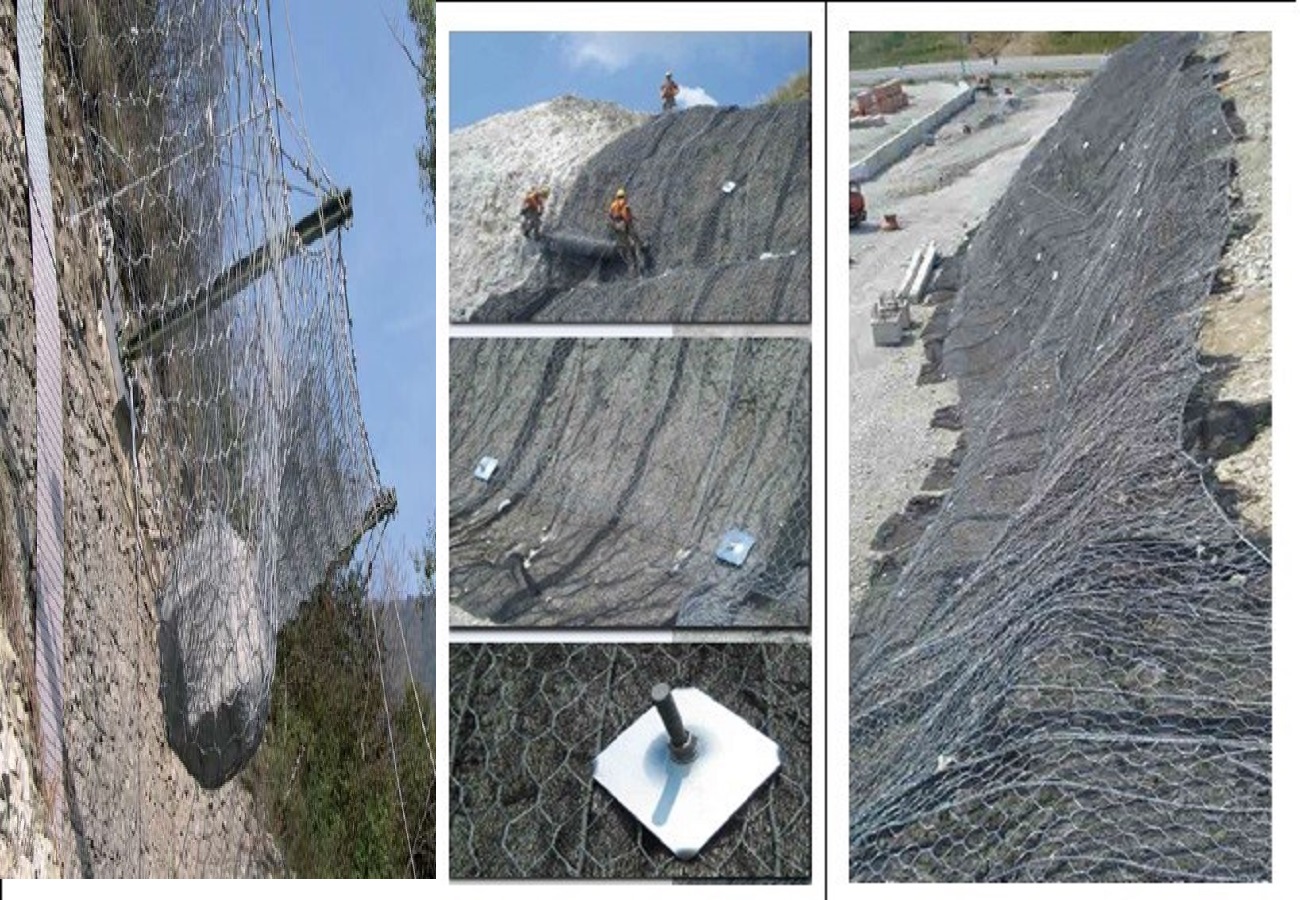ROCK FALL BARRIERS SYSTEM

ROCK FALL BARRIERS SYSTEM
Simple Drapery Systems
Simple drapery systems are designed rockfall protection systems with the purpose of reducing risk and impact of hazardous slopes where rockfall occur. A simple drapery system is as the name suggest, simple in structure, and consist of steel wire mesh rolls connected to a horizontal steel cable on the crest of a slope. The cable in turn is anchored onto the slope crest using steel anchors. It is easy and quick to install, and uncomplicated to design. However, it is not suitable for all type of slopes and is mostly used on steep rocky slopes where smaller rockfalls are expected.
To reduce risk these systems, act as a control curtain, allowing rocks to fall behind the mesh in a controlled manner. The rocks fall to the toe of the slope at a lower velocity due to the mesh acting as a constraint. Simple drapery systems can be left open at the bottom, or closed using cable and anchors, and depends on the site-specific conditions and the requirement of the client.
Open systems allow rocks to collect at the bottom of the slope, and requires a trench to collect the rocks, or adequate space to prevent rocks from moving into vulnerable areas like roads or railways. The open mesh is often held in place, or in contact with the slope with weights. Open systems require less maintenance in terms of the mesh but would require more clean-ups at the bottom of the slope. Closed systems mean the mesh is fixed to the bottom of the slope, which will result in rocks piling up in pockets. Closed systems require less clean-ups of loose rocks, but requires more maintenance on the mesh, as the piled-up rocks adds to the weight acting on the mesh system.
Every simple drapery system is unique its design, as all slope conditions, internal and external, are different. Good experience and comprehensive site analysis are required for the design of simple drapery systems, and an “off the shelf” approach will not be a feasible solution. Simple drapery systems must be designed considering all the possible weights able to transmit stresses on the mesh, such as the actual weight of the steel mesh, the weight of the rock debris accumulated at the toe of the system and the possible external weights
The cable and steel anchors must be correspondingly designed to ensure it transmits the weight of the mesh load and other possible weights acting on the mesh. Designers should also take into consideration the various types of mesh available on the market, its advantages and disadvantages in terms strength, durability, ease of installation, and cost.